A long metallic bar is carrying heat from one of its ends to the other end under steady-state. The varitatin of temperature θ along the length x of the bar from its hot end is best described by which of the following graphs :




The correct Answer is:B
Topper's Solved these Questions
- THERMAL PROPERTIES OF MATTERBOOK - AAKASH SERIESCHAPTER - THERMAL PROPERTIES OF MATTEREXERCISE - EXERCISE-IB
68 Videos
- THERMAL PROPERTIES OF MATTERBOOK - AAKASH SERIESCHAPTER - THERMAL PROPERTIES OF MATTEREXERCISE - EXERCISE-2
106 Videos
- THERMAL PROPERTIES OF MATTERBOOK - AAKASH SERIESCHAPTER - THERMAL PROPERTIES OF MATTEREXERCISE - ADDITIONAL PRACTICE EXERCISE (LEVEL - II) PRACTICE SHEET (ADVANCED) Integer/Subjective Type Questions
2 Videos
- SYSTEM OF PARTICLES AND ROTATIONAL MOTIONBOOK - AAKASH SERIESCHAPTER - SYSTEM OF PARTICLES AND ROTATIONAL MOTIONEXERCISE - PRACTICE EXERCISE
99 Videos
- THERMODYNAMICSBOOK - AAKASH SERIESCHAPTER - THERMODYNAMICSEXERCISE - EXERCISE - 3
33 Videos
Similar Questions
A long metallic bar is carrying heat from one of its ends to the other end under steady-state. The variation of temperature θ along the length x of the bar from its hot end is best described by which of the following figures?
View SolutionA long metallic bar is carrying heat from one of its ends to the other end under steady-state. The variation of temperature θ along the length x of the bar from its hot end is best described by which of the following figure.
View Solution
Knowledge Check
A long metallic bar is carrying heat from on eof its ends to the other end under steady-state. The variation of temperature θ along the length x of the bar from its hot end is best described by which of the following figures?
A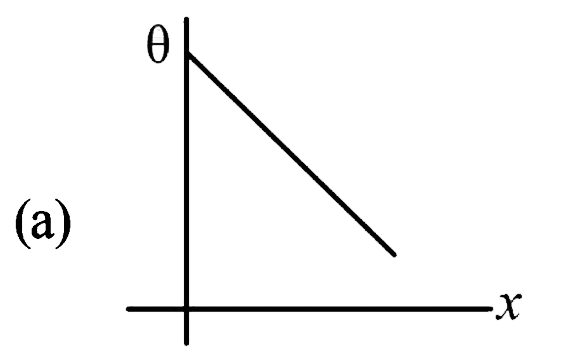 B
B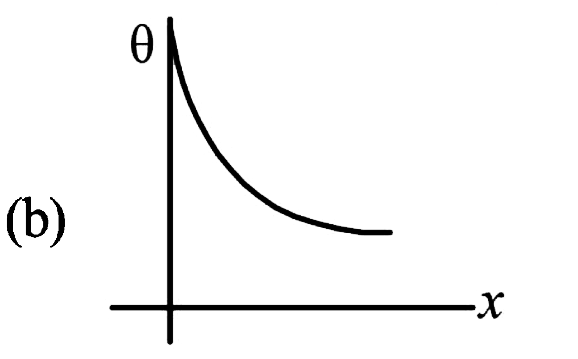 C
C D
D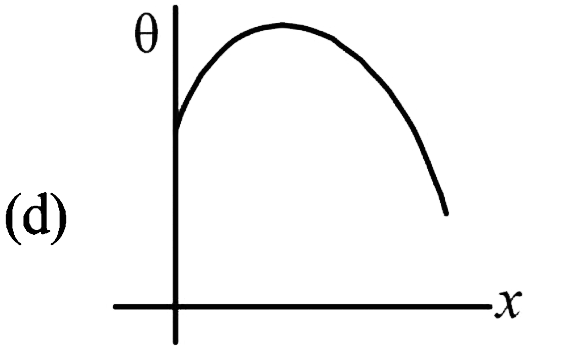
One end of a long cylindrical bar is kept at 200∘C and the other end is matintained at 40∘C. In the steady state the graph of temperature of bar against distance from not end is shown here. From the graph which of the following statements can be concluded true?
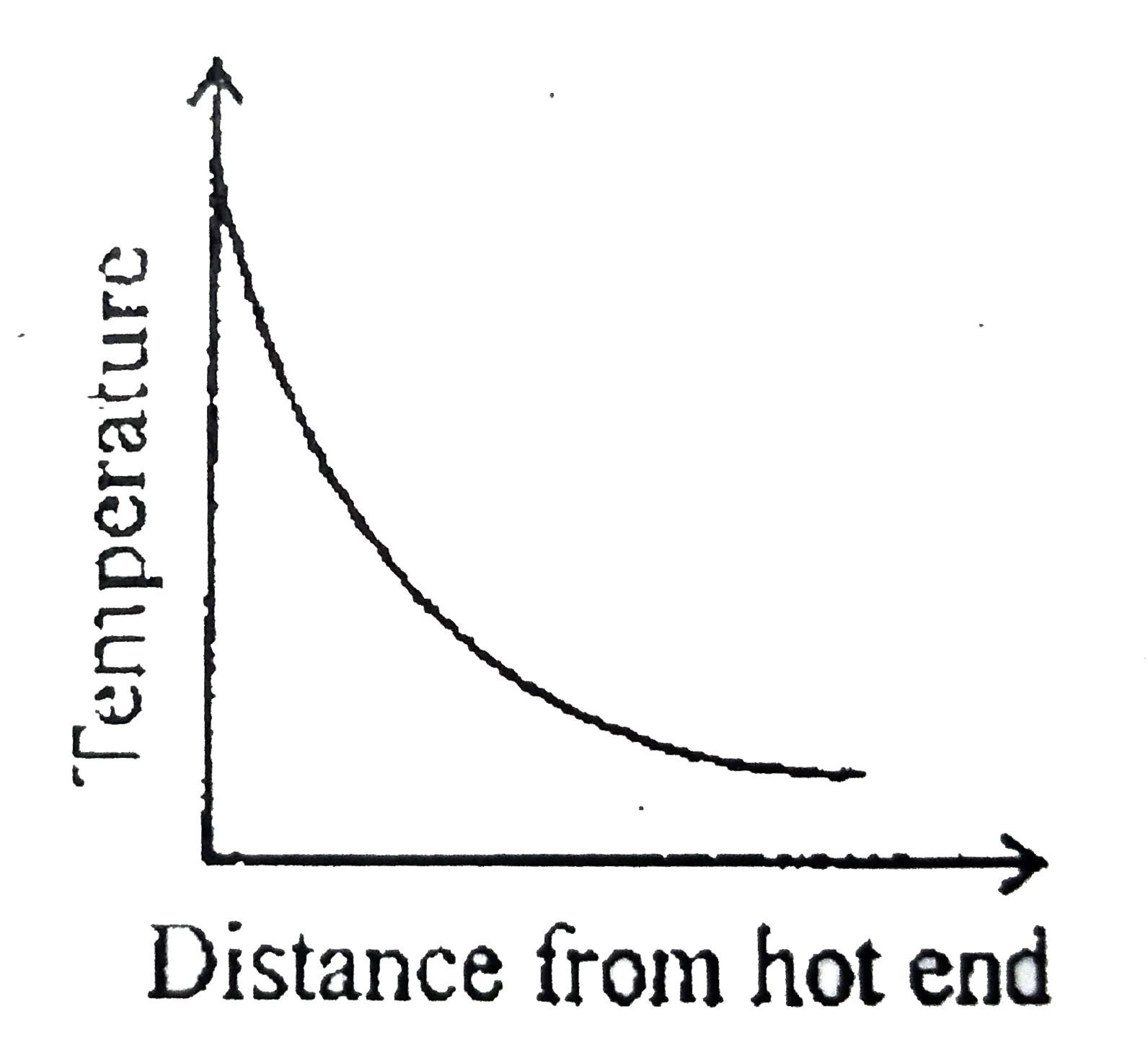 AThe equantity of heat entering the hot cnd per second is equal to that leaving the other end per secondBThe quantity of heat entring the hot end per second is greater than that reaching the other end per second.CNO heat is absorbed by any part of the barDHeat is lost from the curved surface of bar.
AThe equantity of heat entering the hot cnd per second is equal to that leaving the other end per secondBThe quantity of heat entring the hot end per second is greater than that reaching the other end per second.CNO heat is absorbed by any part of the barDHeat is lost from the curved surface of bar.The heat energy is carried by molecules from one end to other end of any medium in
AConductionBConvectionCRadiationDBoth conduction and convection.
The ends of a metallic bar are maintained at different temperature and there is no loss/gain of heat from the sides of the bar due to conduction or radiation. In the steady state the temperature variation along the length of the bar is a shown in the figure what do you think about the cross sectional area of the bar?

View SolutionA uniform bar AB of length 6a has been placed on a horizontal smooth table of width 5 a as shown in the figure. Length 2a of the bar is overhanging. Mass of the bar is 4m. An insect of mass m is sitting at the end A of the bar. The insect walks along the length of the bar to reach its other end B.
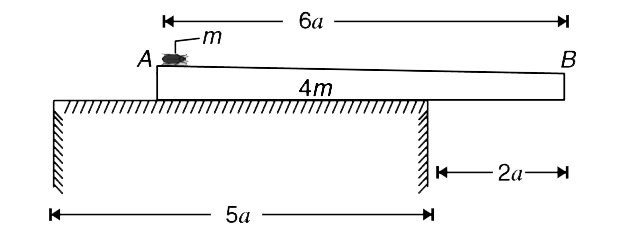
(a) Will the bar topple when the insect reaches end B of the bar ?
(b) After the insect reaches at B, another insect of mass M lands on the end A of the bar. Find the largest value of M which will not topple the bar.
View SolutionThe ends of a long bar are maintained at different temperatures and there is no loss of heat from the sides of the bar due to conduction or radiation. The graph of temperature against distance of the bar when it has attained steady state is shown here. The graph shows (i) the temperature gradient is not uniform.
(ii) the bar has uniform cross-sectional area.
(iii) the cross-sectional area of the bar increases as the distance from the hot end increases.
(iv) the cross-sectional area of the bar becreases as the distance from the hot end increases
View Solutionthere is a bar of length a cm whose one end is on origin and other end is on the X-axis find Co ordinate of both the ends of the bar
View SolutionA metal bar of length l is well lagged with some non-conducting material to prevent losses of heat from its surface and the two ends are maintained at steady temperatures θ1 and θ2 with θ1>θ2, then in the steady state the temperature θ of s section of the bar at distance x from the hot end varies as shown in the graph
View Solution
